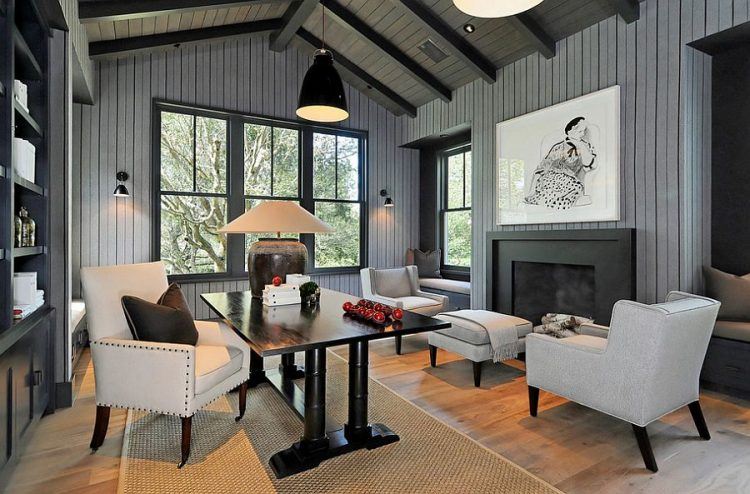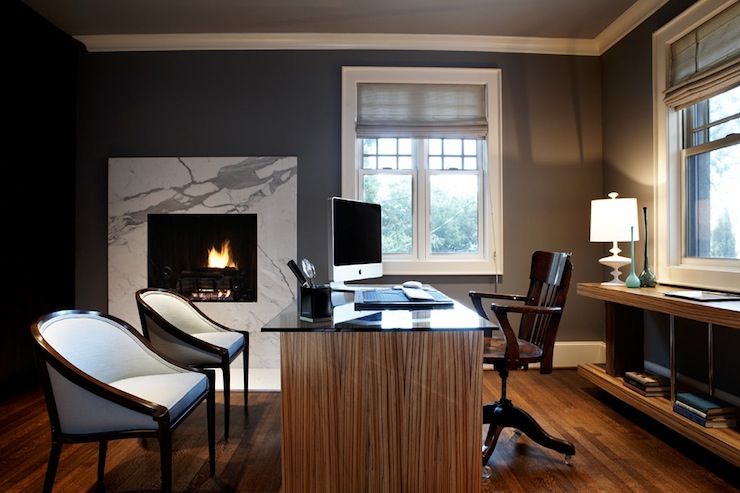
Many people who used to report to an office every day now telecommute. In the internet age, many work-from-home businesses and independent contractors now require a home office to do their job professionally and comfortably. It seems easy to set up a home office, but it can be tricky unless you plan it out first. What essential equipment do you need? Which room should you choose to set up as your home workplace? How much money will it cost to set up a home office? These and other questions go through the mind of anyone looking to work from home for business, or even for hobby or volunteer work purposes.
The following are some key elements to consider when setting up your very own home office.
Tip 1: Choose Your Room

A home office can be a small area set apart under a stairway, a formal den, or even the size of a recreation room. One question to ask is if you will be the only occupant, or will you be sharing office space with a spouse? Will you be entertaining clients in this office space, or is it just for your personal use? If like most at-home workers, it’s just for your use, you can furnish it to your own tastes, often for far less than you would imagine. Is the room located too close to where your kids watch TV or play? You don’t go around shouting and blaring video games when others in your office were working, so you want to make sure your home office environment is as sound proof as possible. Adding some inexpensive carpeting will also help insulate your environment if you are on the top floor of your home.
Tip 2: Size Up Your Room

It’s important to measure and take stock of the area before you move in to do business. Your child’s old room might look like it held lots of items, but keep in mind your adult sized equipment and that you need space to work. Figure out what you will have in your home office and how much space you have allotted for each item. Remember you have to get in and out of the door, and it’s wise to leave a bit of room to pace while you work out that inevitable problem, or even room to place a yoga mat for that well-deserved stretch from time to time.
Tip 3: Electronic Setup

Count the number of electrical outlets in the space, because even if you use surge protected outlet strips, you don’t want to overload the house circuits. If you are converting an area in the basement, check for any leaks or flooding, or mold. Make sure the area is air conditioned in the warm months and heated during the cold seasons, not just to make you comfortable, but to protect your electronic devices.
Tip 4: Invest In a Good Office Chair

You can skimp on some other items, but be sure to spend enough on an ergonomic back chair. If you can’t afford to purchase a brand new one, check for a gently used second-hand chair that provides proper back support.
Tip 5: Your Desk

Finding a usable desk for a song isn’t hard. Check out Craigslist and other secondhand markets for one that suits your taste. When you go to see it, run your fingers underneath the top and sides to make sure if doesn’t have any rough edges or splinters to snag you or your clothes. Does it have a key lock? Does it have room for your computer, a notepad, and other office essentials? If it’s a really good buy otherwise, you may want to invest in refinishing it. Slide any drawers back and forth to see if they stick or are broken.
Is the desk the correct height for your back? How much space will it take up in your home office? Take a measuring tape with you to make sure it conforms to the space you have allotted. No matter how pretty or ornate that antique monster of a desk seems to be if it doesn’t fit, just keep looking. Preferably, look for a unit with built-in storage and holes for cables (or you can drill them if need be. In a pinch, you can use a portable table for a desk until you find a proper desk. What’s on your desk, is more important than what the desk looks like. Buying a cheaper desk leaves more in your budget for a new computer if needed.
Tip 6: Skip the Nick Knacks

When you first move into your home office, you might not feel that it properly reflects your personality; however, don’t go wild with accessories. In a very short time, your home office will naturally fill up with items that reflect you and your goals. You may have had decorating regulations at your old cubicle farm, but resist the impulse to stuff your workspace with ornate items. They just take up space and require dusting.
That stress ball, a Zen garden present from your former co-worker or that perhaps a new award will end up there before you know it, so no need to dig out your old high school ribbons and sports memorabilia. If you are on a budget, you don’t need to re-frame that photo of your domestic partner that you used to proudly display at work, because now he or she is usually right down the hall. Pick one or two personal items, like your degree or professional license and place it where you can glance at it from time to time.
Tip 7: Don’t Sleep Where You Work

It’s better to have your home office in a cupboard under the stairs than try to convert part of your bedroom to a business center. Your mind will be on work when it should be on sleeping and other more interesting things. After your hours, shut the door behind you or leave the space and rejoin your life and loved ones.
You can set up a home office on very little cash. Just ask Stephen King. When he was a struggling teacher, summer laundry worker, and part-time writer, his wife Tabby set up a desk in their home laundry room with a chair and a manual typewriter, and in those humble home office digs he wrote Carrie, according to Mental Floss. He threw the manuscript out at first, but because he worked at home his wife fished it out of the trash and insisted he finish the piece. Having loved ones to encourage you can be another perk of working from home, no matter how modest your workspace.


2 Pings & Trackbacks
Pingback:Modern Home Office Furniture – Homepedia
Pingback:Home Office Modern Furniture – Homepedia